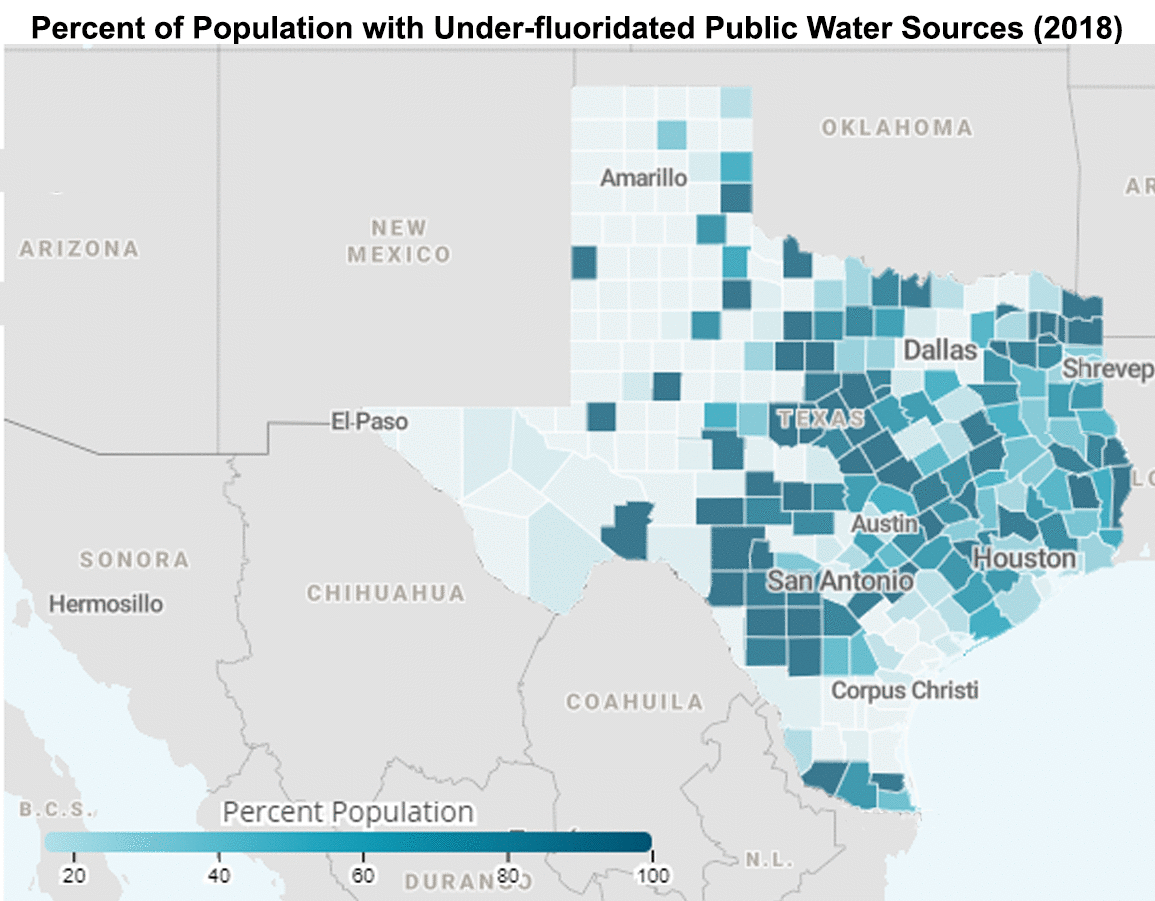Health Professional Resources
Health Professional Toolkit
We’ve developed a Health Professional toolkit to download a patient conversation guide to help health professionals share the benefits of drinking water with fluoride with your patients and integrate the topic into a health care curriculum.
Journal Articles
- Flawed MIREC fluoride and intelligence quotient publications: A failed attempt to undermine community water fluoridation
- Advocating for Oral Health Through Fluoridation
- Consequences of community water fluoridation cessation for Medicaid-eligible children and adolescents in Juneau, Alaska
- Promoting support for community water fluoridation: Testing message effects and the role of normative beliefs
- Social Media Conversations about Community Water Fluoridation: Formative Research to Guide Health Communication
- Systematic Review of Evidence Pertaining to Factors That Modify Risk of Early Childhood Caries
- The effect of community water fluoridation on dental caries in children and young people in England: an ecological study
- Water Fluoridation and Dental Caries in U.S. Children and Adolescents
- Water fluoridation for the prevention of dental caries
Reports and Fact Sheets
- 9 Reasons to Fluoridate Public Water
- All About Fluoride
- Community Water Fluoridation
- Fact Sheet on Fluoridation Products and Fluoride
- Fluoride Fact Sheet for Health Professionals
- Fluoride Facts for Water Operators
- Impact of community water fluoridation on systemic health excluding oral health. An evidence review
- Oral Health in Texas: A Fact Sheet
- Water Fluoridation Costs in Texas
Articles
- Fluoridation exposure misinformation spreads due to circulation of a flawed study
- Kansas Dentist on Advocacy: “It was my duty.”
- Maternal Urinary Fluoride: Not a Valid Measure for Study’s Conclusion
Guides

Exposure to Fluoride: How It’s Measured Really Matters
The Campaign for Dental Health discusses the newly published critique by Guichon et al. on the use of the Maternal-Infant Research on Environmental Chemicals (MIREC) data and the spurious conclusions drawn from it about children’s IQ.

Does Fluoride Lower IQ Scores?
The Campaign for Dental Health discusses the debate and research from across the world on a possible link between fluoride and IQ concluding that more than 6,800 studies and research papers have been produced on fluoridation, and the overwhelming evidence shows its safety and benefits as a public health practice.

Fluoride Safety: A Guide for Health Professionals
A concise explanation of the regulation and safety of fluoride additives and fluoridated water. Common concerns, including daily intake and infant formula, are addressed. Links to valuable resources are provided.

Fluorosis Facts
Gives health professionals a quick, thorough understanding of dental fluorosis and includes photos, follow-up resources, and suggestions for counselings on prevention.

Say This, Not That: Tips for Talking about Community Water Fluoridation
Designed to help health providers address technical, challenging questions with comfort and ease. Addressing many of the most common concerns, this tool offers discussion-friendly responses in a clever graphic format.

The Debate Over Fluoridated Water
“The debate over fluoridation goes back roughly 75 years to when communities began fluoridating water to prevent tooth decay. The issue: Is fluoridated water better for your health or not?”

2018 Fluoridation Facts
Fluoridation Facts is the ADA’s premier resource on fluoridation, answering frequently asked questions about community water fluoridation and the latest scientific research.
Frequently Asked Questions
A: Yes, it remains a concern. Although dental health has improved for many Americans, tooth decay remains the most common chronic childhood disease—five times more prevalent than asthma. Tooth decay causes problems that often last long into adulthood, affecting kids’ schooling and their ability to get jobs as adults.
A: Yes, high levels of natural fluoride in the water can cause fluorosis. “Dental fluorosis is caused by a disruption in enamel formation which occurs during tooth development in early childhood related to a higher than optimal intake of fluoride. … After tooth enamel is completely formed, dental fluorosis cannot develop even if excessive fluoride is ingested” (ADA, “2018 Fluoridation Facts,” p. 50).
A: “Reverse osmosis systems remove fluoride from household drinking water as well as the protective effects that fluoridated water has on oral health. Water softeners use an ion exchange resin that replaces calcium ion within hard water with a sodium ion that results in softer water. So, water softeners do not affect fluoride levels. “
– Angela Kennedy, PE, Former Texas Department of State Health Services, Water Fluoridation Project, Engineer
Home water filtration systems, like Pur or Brita, remove contaminants but do not advertise they remove fluoride or its protective benefits from water.
A: Most bottle water does not contain fluoride. There are many health and dental care providers that may recommend children under the age of twelve drink bottled water with fluoride. “When bottled water without fluoride is substituted for fluoridated tap water, the advantage of regular, small amounts of healing fluoride is lost and children and adults will be more prone to cavity activity on the surfaces of their teeth,” Burton Edelstein, D.D.S., M.P.H. If you use bottled water, insure it has fluoride by checking the label.
A: No, an allergic reaction is an antigen/antibody reaction. The antigen(cause) MUST be a protein. Fluoride is not a protein and therefore cannot be the cause of an allergic reaction. If fluoride is combined with a flavoring or a preservative, they are proteins and can cause an allergic reaction. Fluoride in CWF cannot cause an allergic reaction. When a patient has a reaction to fluoride treatment in a dental office, it is a reaction to the flavoring or preservative which are antigens. It is not due to fluoride.
A: The FDA is just one of several regulatory agencies that ensure public safety. The FDA’s authority is limited to products sold to the public and fluoride has been approved for use in toothpastes, mouth rinses and even bottled water. The FDA has no role in approving drinking water additives pursuant to their agreement with the EPA in the early 1980’s. Additives are covered by state regulations. It should be noted that the FDA does not have the authority to approve many of the products we use every day. For more information on what the FDA regulates, visit https://www.fda.gov/AboutFDA/Transparency/Basics/ucm194879.htm.
The Safe Drinking Water Act (SDWA) of 1974 confers the authority for ensuring the safety of public drinking water to the Environmental Protection Agency (EPA). The EPA is responsible for setting drinking water standards and has the authority to regulate the addition of fluoride to the public drinking water (American Fluoridation Society).
Resource Websites

Fluoride in Water
Fluoride and Fluoridation Resources for dentists, health professionals and the public.

The Campaign for Dental Health, a program of the American Academy of Pediatrics, has organized to defend our progress and ensure that more children get the basic dental care they need to grow, learn, and lead healthy lives.

The American Fluoridation Society was founded in 2014 by a group of concerned professionals anxious to see all residents of the United States served by community water systems enjoy the benefits of community water fluoridation (CWF). Equally important to this Society is to prevent rollback attempts by opponents of CWF, as well as to initiate CWF where it has not been previously available.

Community Water Fluoridation
The CDC provides water fluoridation resources including water fluoridation basics, guidelines and recommendations, data and statistics, and more.

Fluoride Science
Fluoridescience.org is dedicated to balanced reviews of fluoride studies and communicating the qualities and summaries of the scientific evidence for professional communities that may engage in patient care and/or public health services.
Comparison Maps


Under-Fluoridated Counties Compared to Overall Early/Urgent Treatment Needs
Number of Dentists by Counties Compared to Overall Early/Urgent Treatment Needs



